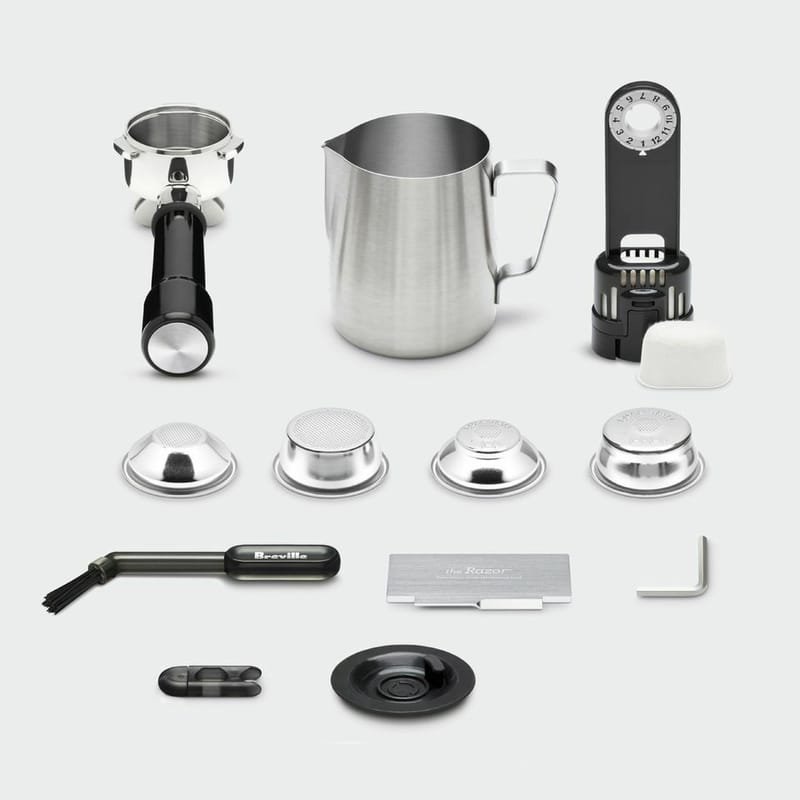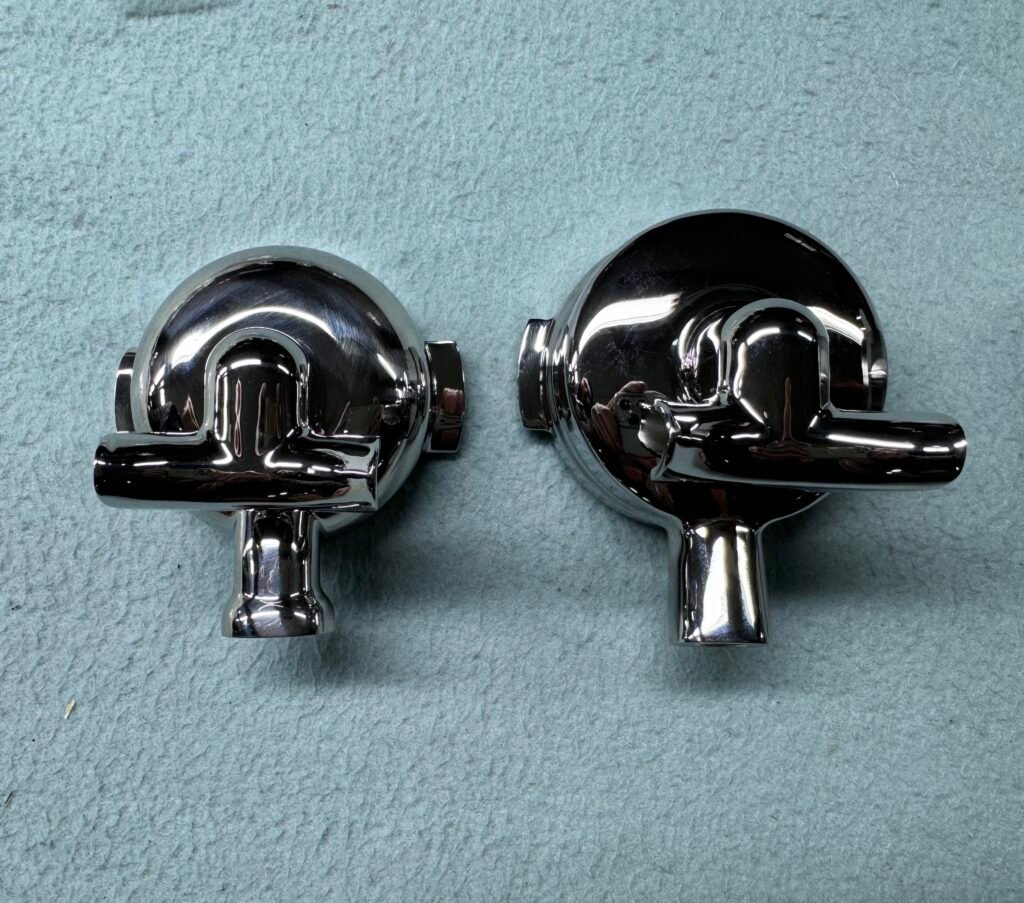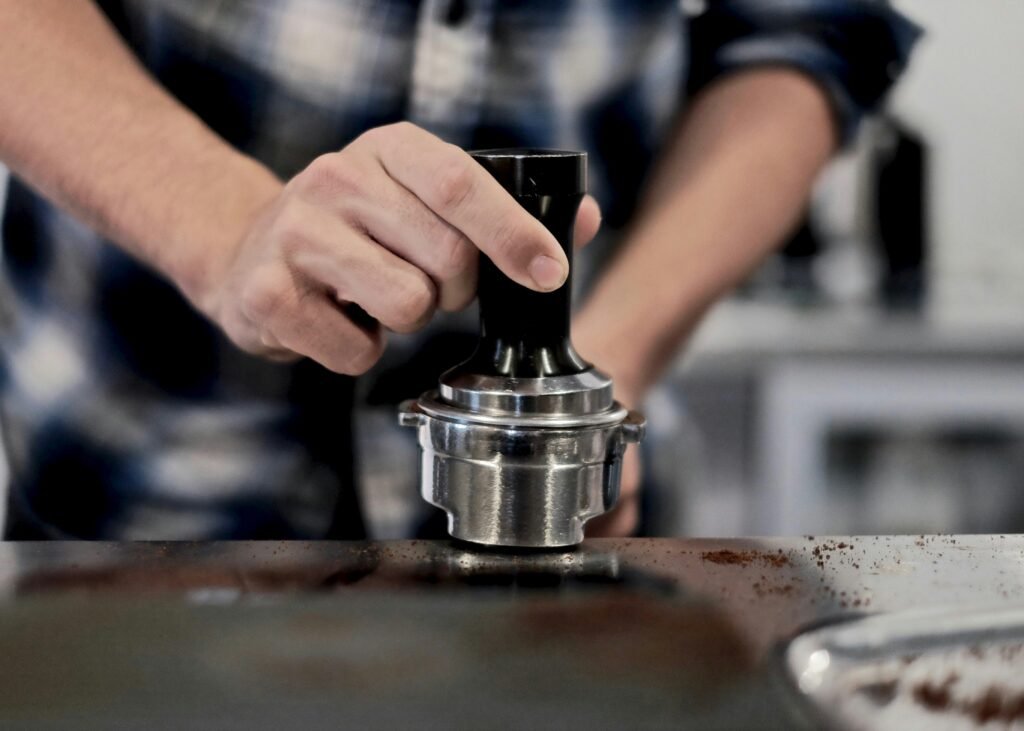Struggling with finding the right portafilter for your Breville machine? Many coffee enthusiasts face this exact problem when looking for replacements or upgrades, often purchasing incompatible parts.
Breville primarily uses 54mm portafilters in most of their home espresso machines, with some higher-end models featuring 58mm portafilters. This size difference is crucial when purchasing replacement parts, accessories, or when considering machine upgrades. Breville's distinct portafilter design balances home use practicality with commercial-inspired performance.

I've worked with countless customers confused about their Breville portafilters. Just last month, I helped a customer who bought a standard 58mm tamper only to find it wouldn't fit his Barista Express. Let's clear up these common questions about Breville portafilters to save you time and money.
Are all Breville portafilters the same size?
Many new Breville owners assume all their machines use identical portafilters, leading to frustrating purchases of incompatible accessories. This confusion comes from the inconsistent sizing across their product line.
No, Breville uses two different portafilter sizes: 54mm in most home models like the Barista Express, Bambino, and Infuser, while their higher-end models like the Dual Boiler and Oracle use commercial standard 58mm portafilters. This distinction is critical when purchasing replacement parts or accessories like tampers and distribution tools.

Breville Portafilter Size Breakdown
Breville's portafilter sizing strategy reflects their approach to different market segments. Their 54mm portafilters[^1] are designed specifically for their mid-range machines, balancing home use practicality with performance. The 54mm size creates a slightly different extraction dynamic[^2] compared to commercial standards.
During my visits to coffee shops using Breville equipment, I've noticed how the difference affects workflow. The 54mm portafilters require specific techniques and accessories that don't transfer to other systems. This creates a bit of a "Breville ecosystem[^3]" where users must purchase Breville-specific accessories.
Here's a breakdown of Breville machines and their portafilter sizes:
| Machine Model | Portafilter Size | Notes |
|---|---|---|
| Barista Express | 54mm | Most popular model |
| Bambino/Bambino Plus | 54mm | Compact design |
| Infuser | 54mm | Entry-level model |
| Duo-Temp Pro | 54mm | Basic features |
| Barista Pro | 54mm | Updated Express |
| Barista Touch | 54mm | Touchscreen model |
| Oracle | 58mm | Prosumer model |
| Dual Boiler | 58mm | High-end model |
| Oracle Touch | 58mm | Premium model |
This size difference has created a distinct market for 54mm accessories that we specifically cater to with our precision-engineered coffee baskets and distribution tools.
Can I use 58mm portafilter on Breville Barista Express?
Dreams of upgrading to a commercial-sized portafilter often lead Barista Express owners to attempt portafilter swaps, resulting in wasted money and mounting frustration.
No, you cannot use a 58mm portafilter on the Breville Barista Express. The Barista Express is designed specifically for 54mm portafilters, and the group head size physically prevents installation of larger 58mm portafilters. They are completely incompatible due to fundamental design differences.

The portafilter compatibility issue goes beyond just diameter measurements. The group head design, including the locking mechanism and sealing system, is completely different between machines designed for 54mm versus 58mm portafilters. This is something I explain constantly to customers looking to mix and match equipment.
When examining Breville's engineering choices, it becomes clear they deliberately chose the 54mm size for their home machines to create a balance between extraction quality and user-friendly design. The smaller diameter creates a different puck geometry that can be more forgiving for beginners while still producing good results.
For those seeking upgrades, there are high-quality replacement portafilters available specifically designed for the 54mm Breville machines. These often feature improvements like:
| Upgrade Feature | Benefit |
|---|---|
| Bottomless design | Better extraction visibility |
| Improved handle ergonomics | More comfortable barista experience |
| Higher quality materials | Enhanced durability and temperature stability |
| Precision machining | Better seal and more consistent extraction |
| Compatible with Breville baskets | No need to replace existing filter baskets |
When I upgraded my own Barista Express with a precision-machined bottomless portafilter, I immediately noticed improved extraction consistency. The weight and feel were significantly better than the stock portafilter, making the daily coffee ritual much more enjoyable.
Can I use 53mm tamper for 54mm portafilter?
Countless coffee enthusiasts purchase slightly undersized tampers, resulting in uneven tamping that ruins extraction and wastes expensive coffee beans.
No, a 53mm tamper will leave a gap around the edges of your 54mm portafilter basket, leading to channeling and poor extraction. For Breville's 54mm portafilters, you need a properly sized 54mm tamper to ensure complete and even compression of the coffee grounds across the entire basket.

Precision Tamping Requirements
The seemingly small 1mm difference between a 53mm and 54mm tamper actually represents a significant gap in coverage. During my training sessions with new Breville owners, I demonstrate this with a simple visual aid: the untamped edge creates a visible ring around the coffee puck.
When water hits this unevenly tamped coffee bed under 9 bars of pressure, it follows the path of least resistance, flowing around the edges rather than through the entire puck. This creates what baristas call "channeling" - where water rushes through certain parts of the puck while barely touching others.
I've tested various tamper sizes with Breville machines and found the ideal dimensions for consistent results:
| Portafilter Size | Ideal Tamper Size | Notes |
|---|---|---|
| 54mm (Breville standard) | 53.5-54mm | Slightly undersized (53.5mm) can provide easier rotation |
| 54mm (Breville standard) | 54mm | Perfect fit but requires precise placement |
| 54mm (Breville standard) | 53mm | Too small - creates edge channeling |
| 58mm (Breville pro models) | 58.4-58.5mm | Commercial standard size |
For beginners, I often recommend a calibrated tamper that provides consistent pressure (usually 30 pounds) along with the correct diameter. This eliminates two variables at once in the espresso-making process.
How do I choose a filter size on Breville?
Many Breville owners struggle with inconsistent shots because they don't understand when to use single versus double filter baskets, leading to extraction problems and frustration.
Breville machines come with multiple filter basket sizes: single-shot (1 cup) and double-shot (2 cup) options, in both pressurized and non-pressurized varieties. Choose based on your desired shot volume and experience level. Beginners should start with pressurized baskets, while experienced users should use non-pressurized baskets for better flavor.

Understanding Breville Filter Basket Options
Filter basket selection substantially impacts your espresso quality. Working with hundreds of home baristas, I've noticed consistent confusion about which baskets to use when. The decision matrix is actually relatively straightforward once you understand the options.
Breville provides four primary basket types with most machines: single and double sizes, each available in pressurized (dual-wall) and non-pressurized (single-wall) varieties. The pressurized baskets[^4] have a secondary wall with a tiny restriction that artificially creates pressure, making them more forgiving for beginners or when using less-than-ideal grind sizes.
My recommendation for filter basket selection follows this progression:
| User Experience | Bean Type | Best Filter Basket Choice |
|---|---|---|
| Beginner | Pre-ground coffee | Double shot pressurized (dual-wall) |
| Beginner | Fresh beans, basic grinder | Double shot pressurized (dual-wall) |
| Intermediate | Fresh beans, decent grinder | Double shot non-pressurized (single-wall) |
| Advanced | Fresh beans, quality grinder | Double shot non-pressurized or precision aftermarket basket |
| Any level | Single shot needs | Single shot basket (though rarely recommended) |
I personally found that switching from the pressurized to non-pressurized basket was the single biggest improvement I made when starting with my Breville machine. The flavor difference was remarkable once I paired it with a suitable grinder capable of espresso-appropriate fineness.
For those serious about espresso quality, I recommend investing in a precision aftermarket basket specifically designed for 54mm Breville portafilters. These precision-machined baskets offer more consistent hole patterns that lead to more even extractions.
Conclusion
Breville primarily uses 54mm portafilters in most home machines, with 58mm in higher-end models. Understanding your machine's specific size ensures compatibility with accessories and replacement parts, helping you get the best from your Breville espresso system.
Breville's portafilter sizing strategy reflects their approach to different market segments. Their [54mm portafilters](https://coffeemachinetools.com/how-to-pick-the-right-portafilter-for-coffee-machine/)[^1] are designed specifically for their mid-range machines, balancing home use practicality with performance. The 54mm size creates a slightly different [extraction dynamic](https://coffeemachinetools.com/espresso-baskets-puck-screens-guide/)[^2] compared to commercial standards.
During my visits to coffee shops using Breville equipment, I've noticed how the difference affects workflow. The 54mm portafilters require specific techniques and accessories that don't transfer to other systems. This creates a bit of a "[Breville ecosystem](https://www.breville.com/en-us/shop/coffee)[^3]" where users must purchase Breville-specific accessories.
---
[^1]: Explore the advantages of 54mm portafilters to understand their unique extraction dynamics and how they enhance your coffee experience.
[^2]: Learn about extraction dynamics and their impact on coffee flavor to improve your brewing techniques.
[^3]: Discover the Breville ecosystem to see how it influences user experience and the necessity for specific accessories.
[^4]: Learn how pressurized baskets can improve your espresso brewing process, especially for beginners, by exploring this informative resource.



